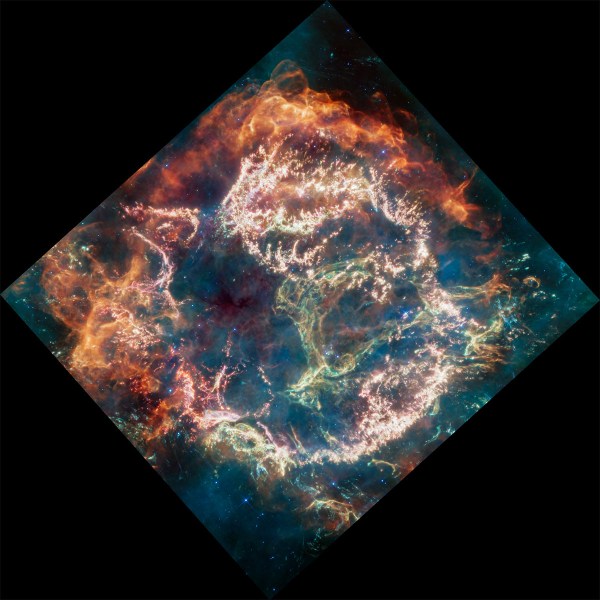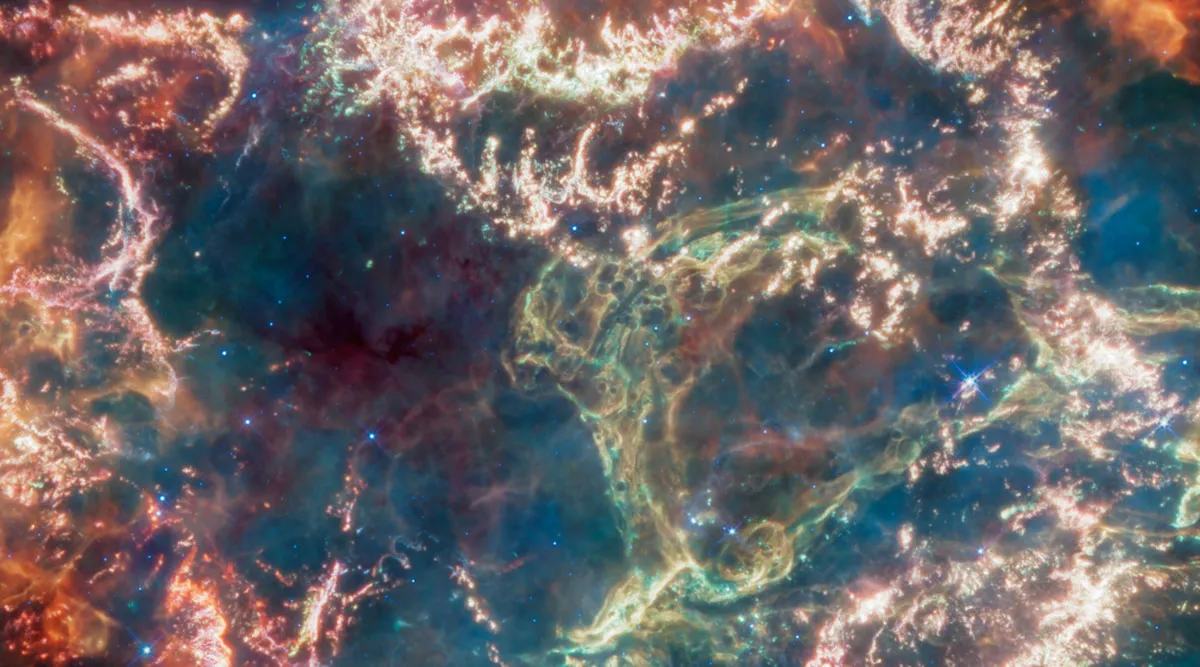Supernovae, or the explosions of stars, are some of the most dramatic events in space. The James Webb Space Telescope has captured details of the Cassiopeia A, the remnant of one such explosion.
Cassiopeia A, or Cas A, is a stellar explosion that happened 340 years ago. According to NASA, it is the youngest known remnant from a massive supernova in a galaxy. This mid-infrared image of the supernova remnant captured by Webb gives astronomers a glance into how such explosions occur.

“Compared to previous infrared images, we see incredible detail that we haven’t been able to access before,” said Tea Temim of Princeton University in Princeton, New Jersey. Temim is a co-investigator of the Webb program that captured the images.
Cas A has been widely studied by other telescopes and observatories, including NASA’s Hubble Telescope and the Chandra X-ray Observatory. But the new mid-infrared images captured by Webb hold a wealth of new scientific information that scientists are only beginning to tease out.
Cassiopeia A and the origins of cosmic dust, and us
NASA says that Cas A can help answer crucial scientific questions about where cosmic dust comes from. This is important because cosmic dust makes up the building blocks of what becomes stars, planets, and eventually, even life.
Scientific observations have revealed that cosmic dust permeates even the very young galaxies in the early universe. Supernovae like Cas A spew out large quantities of heavy elements across space. These heavy elements are what cosmic dust is made of, and it is, therefore, difficult to explain the origins of the dust without attributing some of it to supernovae.
 The new Webb image provides incredible detail compared to previous images of Cas A. (Image credit: NASA)
The new Webb image provides incredible detail compared to previous images of Cas A. (Image credit: NASA)
But there is a problem. Based on current observations of supernovae, it is not possible to explain the sheer amount of dust astronomers see in those early galaxies. Scientists hope to get clarity on that dust content by studio Cas A using the James Webb Space Telescope.
According to Temim, researchers can spatially resolve regions of supernovae like Cas A to look at different gas compositions and see what types of dust were formed in those regions.
It is essential to study Cas A and others such as supernovae because they are crucial for life as we know it. Elements like Calcium, which we find in our bones, and iron, which is in our blood, are spread across interstellar space by supernovae, providing the seeds for new stars and planets.

